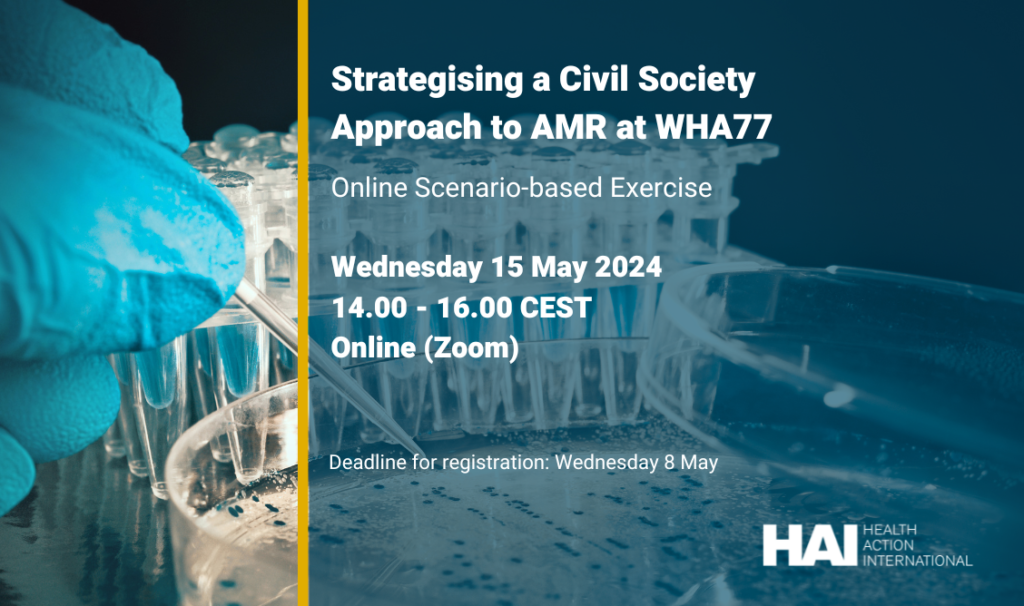Antimicrobial resistance (AMR) has been declared by the World Health Organization (WHO) as one of the top threats to global health. Yet, even in the face of this grave danger to lives and livelihoods, research has shown that there is a global lack of commitment when it comes to the prevention of AMR.
For us at HAI, it remains an issue at the forefront of our work. In recent months, we have developed a wealth of materials for policymakers, researchers, advocates, healthcare workers and others to inform and develop responses, all of which is available in our AMR Toolkit.
But in May 2024, we stepped this work up a notch. This was no coincidence. This year is an important one (some would say make-or-break) for the global response to AMR. Not only was AMR a key agenda item at the World Health Assembly (WHA) in Geneva, but we are also heading towards the UN General Assembly (UNGA) High Level Meeting on AMR due to take place in September in New York.
Recognising this fact, we began the month of May by launching a new policy brief on Enhancing AMR National Action Plans, which built on previous research taking the Netherlands, Italy and Spain as case studies. In this new and valuable addition to the AMR toolkit, we laid out a number of recommendations under general themes, including taking a One Health approach, improving surveillance, and research and innovation.
A Scenario-based Approach to Strategy
By the middle of the month, thoughts had turned to the WHA. In our preparations for this, we wanted to take a collaborative approach, one that showed a united civil society in tackling AMR as an issue that affects us all. To do this, we organised a scenario-based workshop, creating a ‘safe-to-fail’ environment to help explore how we might advance public-interest positions on AMR. For this workshop, the key principle was that participants took on various roles (civil society, industry, a Member State group) as we worked our way through a set of three scenarios. Having never used this as a method for strategising before, it was somewhat nerve-wracking as we didn’t know how it would go down with participants, or whether we’d get a result.

As it happened, we needn’t have worried, and all the participants entered into the event in the spirit we had hoped; open to trying something new and to thinking in different ways. This exercise and its approach were useful in allowing us to think more broadly about how not only we as civil society, but also other key stakeholders, might approach the discussions around AMR. It gave us time to consider how we might react, or how things could be approached differently in the first place as we headed towards the WHA.
All Eyes on Geneva
That took us nicely into the big week in Geneva, where we were able to deliver a statement on the AMR agenda item up for discussion. Bearing in mind the lessons learnt from the scenario-workshop, in our statement we called for more effective coordination of efforts to counter AMR from Member States and advocated the countering of “silo-thinking” that can hinder responses. We were pleased then that the resolution on accelerating national and global responses was approved by Member State delegates.
Eyes Turn to New York
The approval of the resolution means that our attention can now firmly move to the UNGA High Level Meeting, with preparations for that beginning in earnest. We started by attending a stakeholder meeting hosted by the Netherlands government, where we learnt more about their priorities in the run up to September. Following the meeting and after reviewing the UNGA Draft Political Declaration, we developed a number of recommendations, particularly targeted at the government of the Netherlands. Our engagement will continue in the months to come, as will our work to ensure a united civil society voice on an issue that will only gain in importance and already affects us all.
For now, keep an eye on the toolkit for new resources!